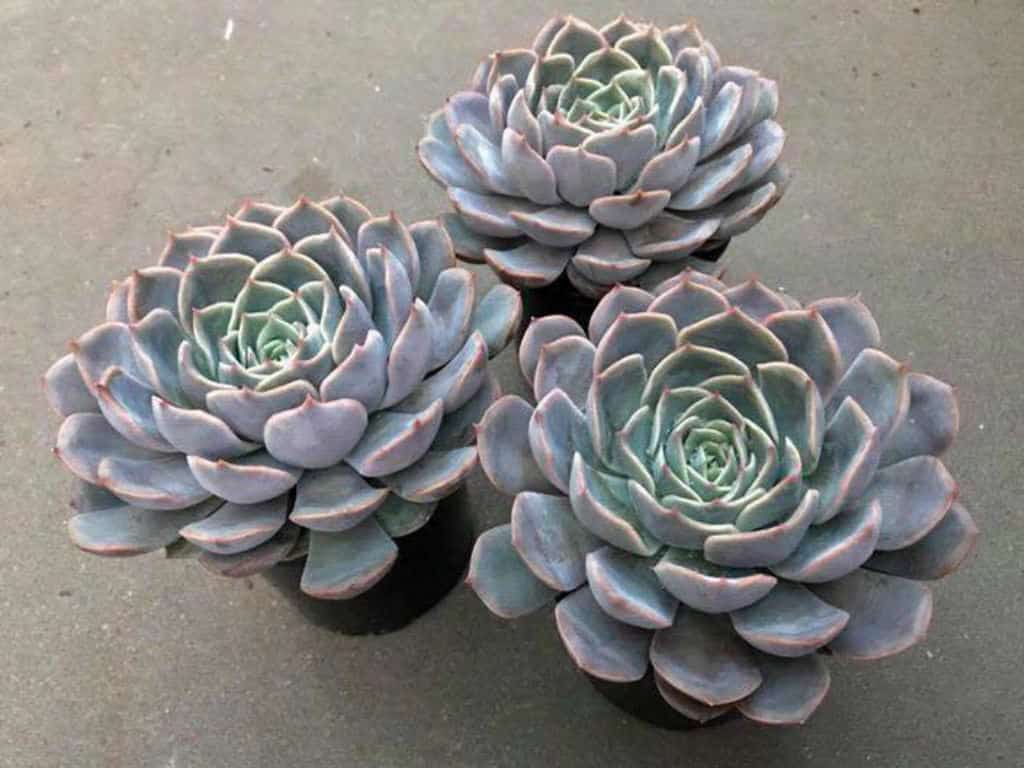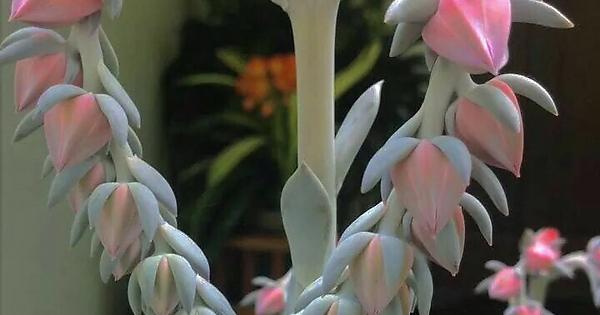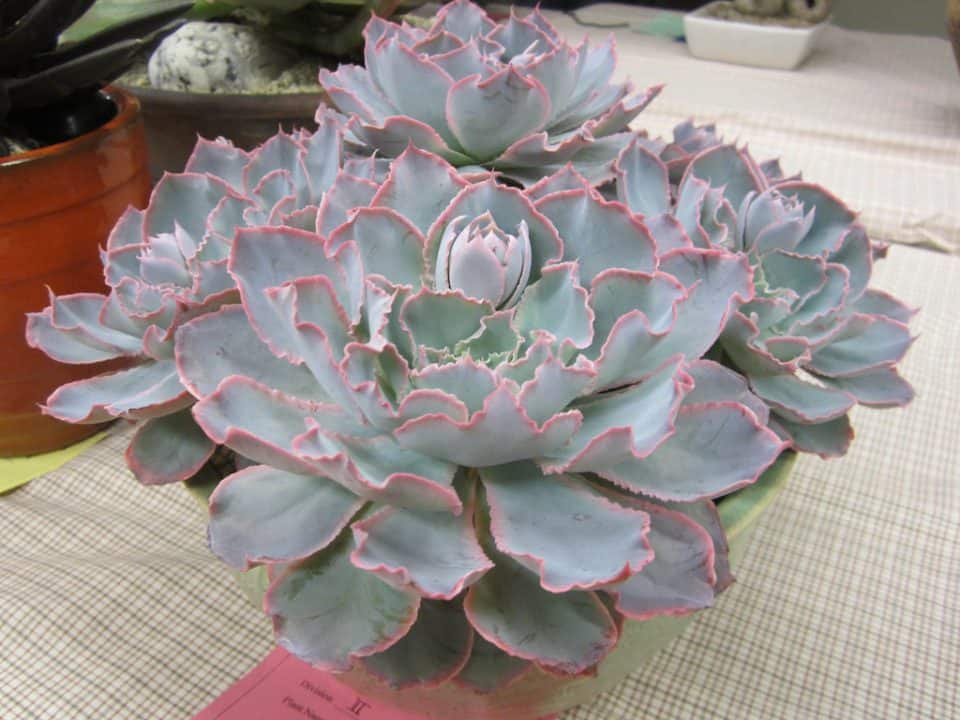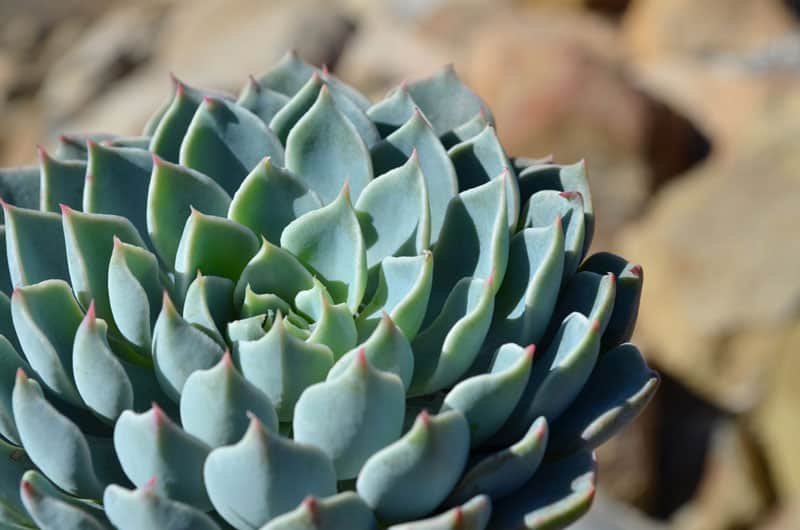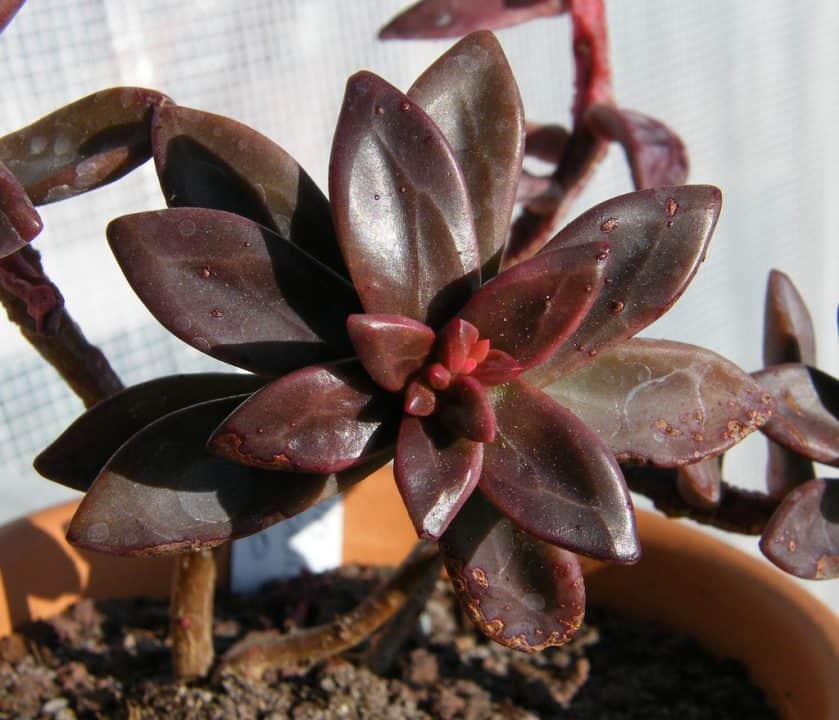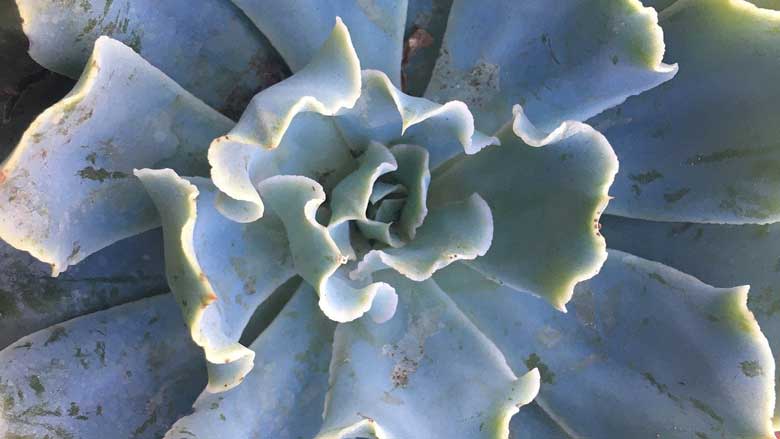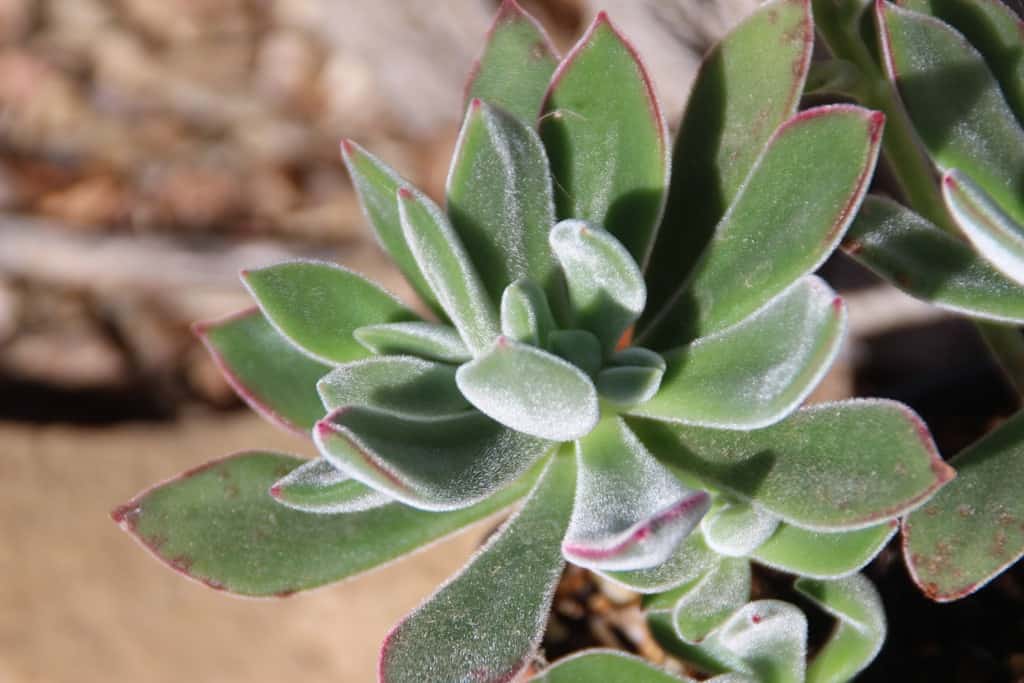Unless you’re an avid gardener or plant collector, you probably don’t know much about the many different types of Echeveria that exist.
Echeveria, also known as hen and chicks or hens and chicks, are becoming increasingly popular as houseplants due to their low-maintenance requirements and striking appearance.
They are in the Crassulaceae family, along with other succulents such as jade plants and aloe plants. It can be difficult to identify individual Echeveria species based on visual features alone, but knowing the most common types of Echeveria can help you differentiate between similar species that you encounter.
Echeverias are incredibly easy to care for succulents that have beautiful, long-lasting flowers that make them popular additions to any succulent garden.
Below are 30 of the most popular types of echeveria you need to know about and how to care for them properly. As with any houseplant, always check with your local nursery or horticulturalists to see if they are appropriate for your growing conditions!
Propagating different types of echeveria
Echeveria can be propagated from offsets, leaves, or stem cuttings. To propagate from an offset, remove it from the mother plant with a sharp knife or scissors. Allow the offset to callous over for a few days before potting it up in well-draining soil. Water the offset sparingly until new growth appears.
For leaf propagation, place a leaf in well-draining soil and water it sparingly until new growth appears. The easiest way to propagate echeveria is by taking stem cuttings. Cut a healthy branch from the echeveria using a sharp knife or shears.
Make sure that you are taking a branch that has at least three sets of leaves on it and stripping off any damaged parts of the plant’s skin (usually caused by bugs). Insert the cutting into moist rooting media and cover lightly with more moist rooting media.
Some people use rooting hormones to increase the likelihood of success. Keep the cutting in bright light but out of direct sunlight while waiting for roots to form. Once new roots have formed and developed 2 to 3 nodes, transplant them into their own container with well-drained soil.
Caring for echeveria
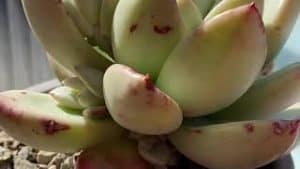
Though echeveria is considered low-maintenance, they still need some TLC to stay healthy and look their best. Remember that each type of echeveria will have its own particular needs. Here is a list of what you need to know about the most popular types of echeveria.
Light requirement
All echeveria need bright light, but some can tolerate low-light situations better than others. If you’re not sure how much light your plant needs, check the packaging or ask the nursery where you bought it. The amount of light your plant gets will affect its growth rate and how often you’ll need to water it.
Soil/potting mix
Cactus and succulent soil mix are ideal for planting echeveria. The mix should be well-draining to prevent the roots from rotting. A good ratio to use is two parts cactus mix to one part perlite or pumice. If you cannot find a cactus mix, you can make your own by mixing together equal parts potting soil, coarse sand, and perlite or pumice.
Watering
As with most succulents, echeverias are drought tolerant plants that don’t need a lot of water to survive. In fact, too much water can be detrimental to their health, causing them to rot or develop fungal diseases.
When watering your echeveria, make sure the soil is completely dry before giving them a good soak. Allow the water to drain completely before putting them back in their pot or planting them in the ground.
Fertilizing
Echeverias are not heavy feeders, so you don’t need to fertilize them very often. A general rule of thumb is to fertilize once a month during the growing season and every other month during the winter. If you notice your plant starting to look pale or unhealthy, you can give it a little boost with a half-strength fertilizer solution. Just be sure not to overdo it, as too much fertilizer can burn the roots and damage the plant.
Humidity and temperature
Both humidity and temperature play a big role in the health of your echeveria. If the air is too dry, the leaves will start to shrivel and drop off. If the temperature drops below 50 degrees Fahrenheit, the plant will go into shock and may die. The ideal temperature for echeverias is between 65 and 75 degrees Fahrenheit during the day, and between 55 and 60 degrees Fahrenheit at night.
The ideal humidity range is 30-50% during the day and 10-30% at night. In order to achieve this, it’s important to use room humidifiers or humidify the room with a shower.
One way to tell if you have given your echeveria enough water is by looking at its foliage.
When they are healthy, they should be green and firm; if they turn yellow or wilt, it means that they need more water.
Pruning
When it comes to pruning your echeveria, the most important thing to remember is not to remove more than one-third of the plant at a time. This will help prevent shock and encourage new growth.
Always use clean, sharp pruners to make clean cuts. Make sure to disinfect your pruners between cuts to avoid spreading disease. Never remove leaves or flowers, as these are necessary for photosynthesis. If you don’t want the hassle of cutting back your plants, simply take cuttings from them instead!
Popular echeveria types
Echeveria Perle Von Nurnberg
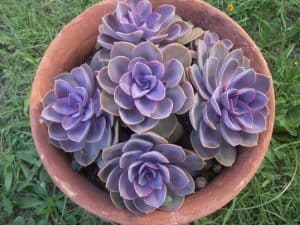
A beautiful succulent that’s perfect for any indoor or outdoor space, the Echeveria Perle Von Nurnberg features light pink and green leaves. This plant is drought tolerant and low maintenance, making it a great choice for those who are new to succulents.
The Perle Von Nurnberg can be propagated by leaf cuttings, so if you’re looking to add more of these beauties to your collection, it’s easy to do so! The plants prefer an area with plenty of natural sunlight, but will also thrive in shadier spots. Keep them watered during periods of extreme heat, but otherwise, they need little care.
Echeveria pelusida ‘Ebony’
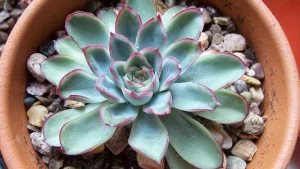
Aptly named, ‘Ebony’ is a small, slow-growing succulent that features unique, dark leaves. The leaves are almost black in color, and they have a slight purple hue. This echeveria is perfect for those who want to add a touch of darkness to their succulent collection. It can grow up to 8 inches high, but it takes 5 years before it blooms. It does well indoors or outdoors and prefers bright sunlight with plenty of water.
Echeveria Moonglow
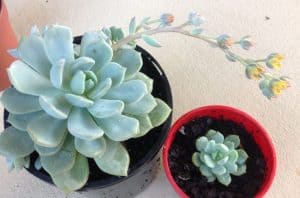
One of the most popular types of echeveria is the Moonglow. Also called Graptoveria moonglow, it is characterized by its rosette shape and soft, silvery-blue leaves. The Moonglow grows best in full sun to partial shade and in well-drained soil. When watering, be sure to allow the soil to dry out completely between waterings.
You can propagate this plant through cuttings, which you should do during the warmer months. If grown indoors, provide a window with lots of natural light or supplemental artificial light.
Be careful not to overwater because overwatered plants may develop root rot and turn yellow. Fertilize once every two weeks using a houseplant fertilizer diluted at half strength. Prune back any damaged or dead parts from time to time.
Echeveria Rosea
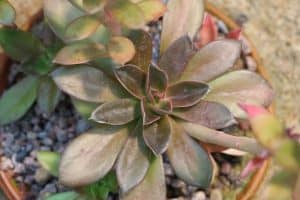
This type of echeveria has gorgeous, rosette-shaped leaves that are a dusty rose color. They grow to be about 4-6 inches in diameter and have a beautiful, ruffled appearance.
The flowers of this plant are pink and bell-shaped, and they bloom in the springtime.
These plants are native to Mexico and can tolerate a wide range of light conditions, making them perfect for both indoor and outdoor gardens.
When planting your echeveria rosea, it is important to make sure that its soil drains well and that it is not too dry or too wet. The potting mix should also be made up of 50% sand and 50% organic compost.
Echeveria ‘Avocado’

A cross between Echeveria ‘Perle von Nurnberg’ and an unknown variety, this hybrid has thick, green leaves that somewhat resemble an avocado. It can grow up to 12 (30 cm) tall and 12 (30 cm) wide. As a succulent, it will do best in dry soil with lots of sun exposure. If you live in a colder climate, make sure to keep it near a sunny window or add extra light for it during the winter months.
When planting your echeveria outdoors, use well-draining soil. When caring for your plant, avoid using water from the tap as it contains chlorine which will kill the plant. If you have any questions about caring for your echeveria houseplant or outdoor garden specimen, please contact our customer service team at any time!
Echeveria ‘Blue’
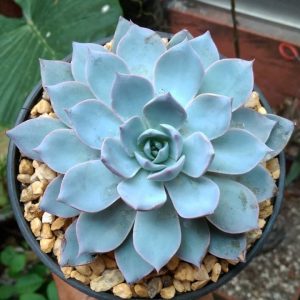
A beautiful blue-hued succulent, Echeveria ‘Blue’ is a hybrid of two other echeveria varieties. It’s a fast grower and can reach up to 12 inches in diameter. The flowers are light purple and bloom during the winter months. The best thing about this variety? They are resistant to spider mites!
So you won’t have to worry about them if you live in an area where these pests tend to reside. Plus, they require little care, making them perfect for people who don’t have time or energy for gardening.
All you need to do is provide them with sun and water when their soil dries out. Like all succulents, it will also help if you put potting soil around the roots every now and then. If your leaves start curling at the edges, that means that it’s not getting enough water so try watering more often!
Echeveria Miranda
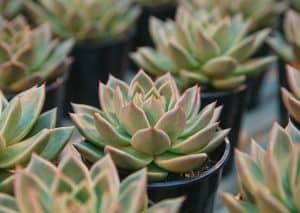
Miranda is a hybrid echeveria that was created by crossing two existing echeveria varieties. The result is a plant that has the best features of both parent plants. Miranda is a fast-growing echeveria that can reach up to 12 inches in height. The leaves are pale green with red tips and the flowers are pink.
It’s a low-light plant, so it thrives well indoors. It’s also drought-tolerant so you don’t have to worry about watering this one too much. Keep an eye out for mealybugs as they may show up on the stems. Other than that, this pretty succulent is easy to grow!
Echeveria purpusorum
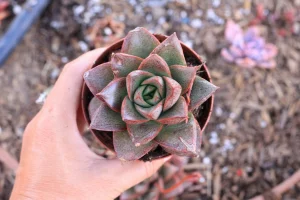
A native of Mexico, this echeveria gets its name from the Latin word for purple, purpus. The leaves of this plant are a deep green with hints of purple, and the flowers are a deep purple. This plant is drought tolerant and does best in full sun. It can be propagated by leaf cuttings.
It may also attract bees and butterflies to your garden! Plant it close to your patio or porch so you can enjoy the lovely flower colors and smell. If you like having succulents around, these are perfect plants to grow indoors because they thrive in dry climates.
They work well as a ground cover because they only need watering every 3-4 weeks. The big disadvantage is that it’s not cold and hardy so if you live in an area where there are harsh winters, you should choose another type of succulent instead.
Echeveria Compressicaulis
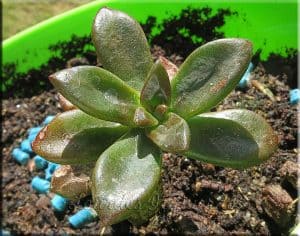
A low-growing, compact succulent, Echeveria Compressicaulis is perfect for adding a splash of color to your indoor décor. With its rosettes of fleshy, green leaves, this echeveria variety is drought-tolerant and easy to care for.
It’s also a great houseplant because it can tolerate shady areas as well as indirect sunlight. In the event that you forget to water it, this plant will let you know with brown spots on the tips of its leaves – don’t worry though! All you need to do is take better care of it and the old green will come back!
Echeveria laui

A beautiful plant that’s native to Mexico, Echeveria laui is characterized by its light green leaves and pink flowers. It’s a fairly slow-growing plant, so be patient when waiting for it to mature. When it does, you’ll be rewarded with a stunning succulent that’s perfect for your home or garden.
Echeverias are fascinating plants with many different varieties; each type has its own unique beauty that can’t be missed. One thing to keep in mind is that some of these types of echeveria need more sunlight than others, so be sure to read up on the specifics before making a purchase. If you’re not sure which one is right for you, our echeveria care guide will provide all the information needed.
Echeveria Orion
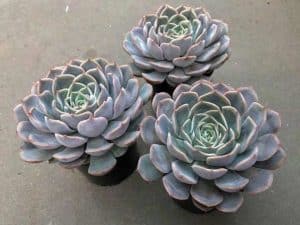
A beautiful rosette-shaped succulent, Echeveria Orion is a deep green with purple hues. The leaves are slightly toothed and have a ruffled appearance. When grown in bright light, the leaves will take on a reddish hue. This variety of echeveria is slow-growing and can reach up to 12 inches in diameter.
It requires little water and should be potted in a well-draining soil mix. It needs full sun or partial shade but never direct sunlight. Try placing this type of echeveria near a south-facing window so it gets some indirect sunlight. Protect from frost and overwatering.
Echeveria setosa
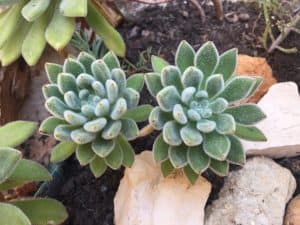
A native of Mexico, the Echeveria setosa is a small succulent that grows in a rosette shape. The leaves are green with red tips and the flowers are pink. This plant is perfect for growing in containers or as part of a succulent garden. The Echeveria setosa needs bright light to grow well. In order to prevent rotting, this plant does not like wet soil.
Water it only when the soil is dry and give it plenty of air circulation by keeping it away from heating vents or fireplaces. A common problem with the Echeveria setosa is overwatering.
It will also rot if you don’t water it enough because its fleshy root system doesn’t allow water to be absorbed fast enough. It prefers a sunny spot but can take less light than other types of echeveria plants.
Echeveria Shaviana
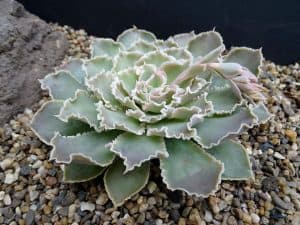
One of the most popular types of echeveria, the shaviana is known for its beautiful rosettes. The leaves are thick and fleshy, and they range in color from green to purple. The flowers are small and pink, and they bloom in the springtime. Echeveria shaviana is a low-maintenance plant that is easy to care for. It can be propagated by offsets or by leaf cuttings.
The water needs of this plant are high, so it will need to be watered regularly. For an even better look, you should fertilize it once a month during the growing season with an all-purpose fertilizer.
A shaviana will not tolerate much frost, but it’s possible to grow one indoors as long as you have a south-facing window. If your windows aren’t exposed to direct sunlight, place the pot near a south-facing window for optimal growth.
Echeveria ruffles
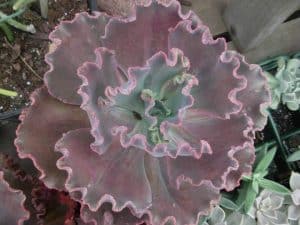
These pretty little plants have ruffled leaves that come in a variety of colors. They’re perfect for adding a touch of color to any space, and they’re easy to care for. Just make sure to give them plenty of sunlight and water them when the soil is dry.
If you live in an area with cold winters, this type of echeveria will not survive outdoors year-round. It’s best to store it inside during the winter months and bring it back outside in the spring. Otherwise, treat it like any other houseplant! You can also enjoy these plants as indoor garden centerpieces or even use them as cut flowers.
Echeveria nodulosa
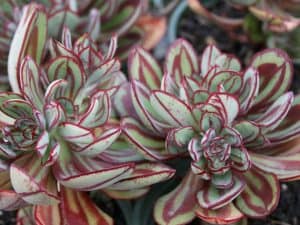
A low-growing succulent, Echeveria nodulosa is characterized by its rosettes of fleshy, spoon-shaped leaves. The leaves are pale green with red margins and tips, and the plant produces small yellow flowers. It grows in rocky soils and thrives in dry climates. While it prefers partial shade, it can tolerate full sun as well.
As such, this echeveria is often used as an accent for desert gardens. Sometimes known as Mexican Snowball or Mexican Hat Plant, these plants have become so popular that they are now widely available for purchase at nurseries throughout the United States.
Echeveria ‘Jewel of Desert‘
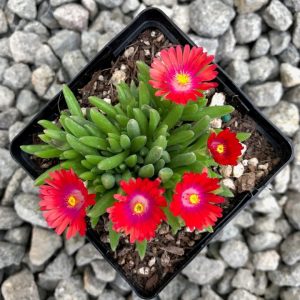
A stunning, slow-growing succulent, Echeveria ‘Jewel of Desert’ features powdery blue-green leaves with pink margins. The leaves are arranged in a rosette and can grow up to 6 inches in diameter. This echeveria is a great choice for beginners as it is easy to care for and is tolerant of neglect.
It does not need a lot of water or fertilizer, making it ideal for people who have busy lives or who lack gardening experience. As the plant matures, its soil will become dry and compacted. In order to prevent this from happening, you should fertilize your plant by lightly watering the soil before applying fertilizer at the base of the plant’s stem. When watering, be sure to avoid getting the foliage wet.
Additionally, if your plant develops yellow spots on its leaves, then it may be time to repot the plant into a larger pot that has fresh potting soil.
Echeveria Black Prince
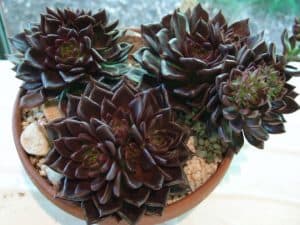
A favorite among succulent growers, the Black Prince is a small plant that features dark, almost black leaves. The tips of the leaves are often red or pink, adding to the plant’s overall appeal. While it’s not the easiest echeveria to care for, it is definitely worth the effort. If you’re looking for a unique succulent to add to your collection, the Black Prince is a great choice.
A favorite among succulent lovers, the Black Prince is easily recognizable with its deep purple leaves. The color is so dark that it almost appears black, hence the name. If you’re looking to add some drama to your succulent collection, the Black Prince is a great choice.
It can be difficult to keep this succulent alive indoors, but the effort is usually worth it. It doesn’t have as many spines as other plants in this category and instead relies on thick leaf surfaces for protection from predators.
One more thing: don’t forget about the water! As a succulent, the Black Prince has high water needs and will need to be watered at least once per week. If you find yourself neglecting to water your Black Prince, allow it to dry out before watering again. They also prefer plenty of sunlight and should only be placed near windowsills if they do not receive direct sunlight outdoors.
Echeveria Topsy Turvy
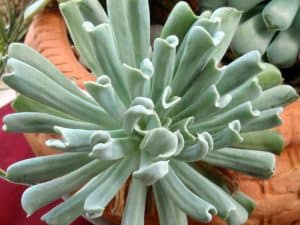
One of the most popular types of echeveria is topsy-turvy. As its name suggests, this plant has leaves that grow in a topsy-turvy fashion. The leaves are also variegated, meaning they have different colors on them. This plant is easy to care for and can tolerate a wide range of conditions.
It’s a great choice for beginners or those who don’t have a lot of time to dedicate to their plants. The only thing you need to do for it is water it regularly during the warmer months and provide protection from frost when winter arrives.
It should be noted that this type of echeveria prefers well-drained soil, so you may want to mix some sand into your potting soil before planting.
Echeveria derenbergii
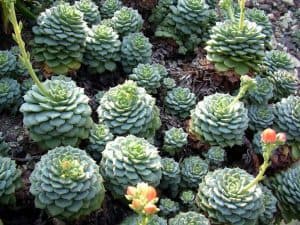
A type of echeveria that is native to Mexico, this plant is characterized by its soft, blue-green leaves. The leaves are oval-shaped and have a ruffled edge. The flowers are pink and bloom in the summer. This plant is drought tolerant and does best in full sun. These plants need excellent drainage and do not like humidity.
They can be propagated from leaf cuttings or by division. For these types of plants, you should fertilize once a month with an all-purpose fertilizer. If you notice any pests on your plant, there are some safe products available at most garden centers that will help get rid of them.
One thing to note about this type of echeveria is that it needs great drainage and should never be planted in humid areas. It also prefers full sun so make sure it gets enough light.
Echeveria Dusty Rose
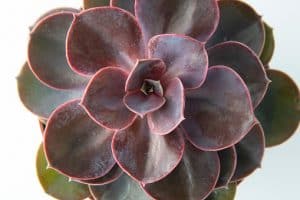
A beautiful plant that’s perfect for those who are new to succulents, the Echeveria Dusty Rose is a low-maintenance option that will brighten up any space. It’s easy to care for, and its pinkish-grey leaves add a touch of elegance to any room. If you’re looking for a plant that’s both easy to care for and stylish, the Echeveria Dusty Rose is a great option.
The plant requires watering only once every two weeks, so it’ll be hassle-free. Not only does this succulent provide an interesting aesthetic in your home or office but it also acts as an air purifier by removing pollutants from the air while releasing oxygen into the atmosphere!
This unique plant is relatively inexpensive and can grow anywhere from 4 inches to 12 inches tall. If you have children or pets at home, don’t worry about the safety of your plants because they can withstand both pet and child playtime with ease.
The only downside to these plants is that they require some time before they bloom; however, their beauty outweighs this small inconvenience because they’ll grow to be stunning if left undisturbed!
Echeveria Elegans
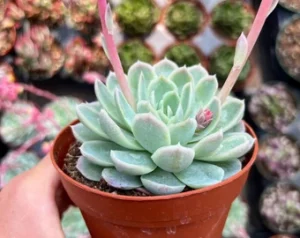
A beautiful succulent that’s native to Mexico, Echeveria elegans is characterized by its rosette shape and lush, green leaves. This type of echeveria is one of the most popular, and it’s easy to see why – it’s simply stunning. If you’re looking for a low-maintenance plant to add to your collection, Echeveria elegans is a great choice.
It requires very little care but will thrive in moist soil with good drainage and bright sunlight. It also does well in containers so long as they are large enough to accommodate its roots. It can be propagated from stem cuttings or seedlings. However, if you decide to propagate this succulent from seedlings, remember that the seeds need cold stratification before planting them outdoors or indoors.
As with all types of echeveria, avoid placing this plant too close to fireplaces or other heat sources because it may dry out too quickly. For optimum growth, fertilize sparingly and water thoroughly when the top inch of the soil becomes dry. When watering, make sure to keep the pot elevated to prevent water from pooling around the base of the pot.
Echeveria Doris Taylor
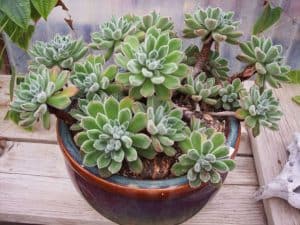
This type of echeveria has powdery blue-green leaves that form a rosette. The leaves are edged with pink and have a yellow center. The flowers are pink and bloom in the spring. This plant is native to Mexico and can be found in the wild in rocky, dry areas. It requires full sun and likes soil that is well-drained.
It does not like being too wet or too dry so it needs moderate watering. It prefers temperatures between 50 degrees Fahrenheit during the day and 65 degrees Fahrenheit at night.
A humidifier may help if the air is very dry in your home. If you want to propagate this type of echeveria, cut off a piece about 6 inches long and place it into moist potting soil with good drainage.
Echeveria Neon Breakers
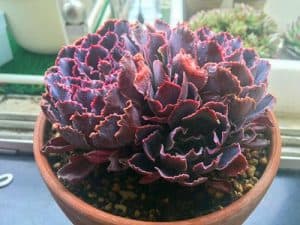
A popular type of echeveria, Neon Breakers is known for its vibrant colors and ability to add a pop of color to any space. A native of Mexico, this plant is easy to care for and can thrive in both indoor and outdoor settings. With proper care, Neon Breakers can grow to be up to 12 inches tall and wide.
It does well with indirect sunlight but also does well with the full sun when the temperature is below 95 degrees Fahrenheit. When planting, make sure that it has good drainage and that it gets at least six hours of water each week.
If planted outdoors, place it in an area that doesn’t get direct sunlight for more than eight hours each day. Echeveria Neon Breakers need consistent moisture to prevent leaves from turning brown or crispy and dying off altogether.
Echeveria Tippy Toes
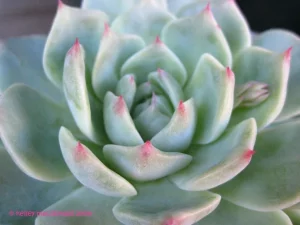
This type of echeveria is perfect for those who want a plant that’s easy to care for and maintain. Tippy Toes is known for its low-maintenance requirements, and its ability to thrive in a variety of conditions. Plus, this plant is perfect for those who are new to the world of echeveria, as it’s one of the most forgiving types out there.
With few exceptions, these plants will live no matter what you do to them! They grow well in direct sunlight or indirect light, so feel free to experiment with both. They also don’t require very much water; be sure not to overwater these plants.
The only thing you need to worry about is keeping them at average room temperature (between 60°F and 85°F). Other than that, they’re pretty much maintenance-free. It’s best to feed your Tippy Toes once a month by using an all-purpose liquid fertilizer.
Echeveria Afterglow
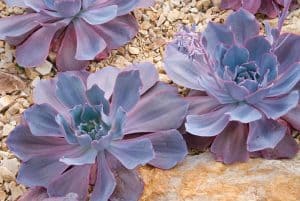
One of the most popular types of echeveria is the afterglow echeveria. It’s a hybrid that was created by crossing two other types of echeverias, and it’s characterized by its rosette shape and bright colors. The afterglow echeveria is a great choice for beginners because it’s easy to care for and can tolerate a wide range of conditions.
If you’re looking for a colorful addition to your collection, this is the plant for you! After researching these plants, I’ve decided that they will be my next gardening project. They are fairly easy to grow in a variety of climates and conditions, and they don’t require any special maintenance.
Plus, they come in so many different shapes and sizes with stunning colors – making them perfect additions to any garden or home decor arrangement!
Echeveria Blue Atoll
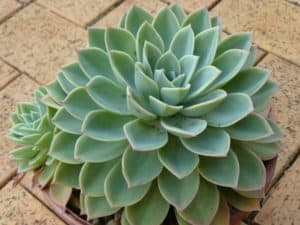
One of the most popular types of echeveria is the Blue Atoll. It’s a beautiful blue-green color with a rosette shape. The leaves are thick and fleshy, which helps them retain water well. It’s a low-maintenance plant that can tolerate partial sun or shade. If you’re looking for a striking addition to your succulent collection, the Blue Atoll is a great choice!
Though they require some sunlight, they don’t need as much as other succulents do. They also require less water than many other plants because they have thicker leaves that help them store moisture.
These plants typically grow slowly and will eventually grow in size. There are several different varieties of this type including Blue Atoll White and the more recent release, Miniature Pink Tinged Blue Atoll.
Echeveria agavoides
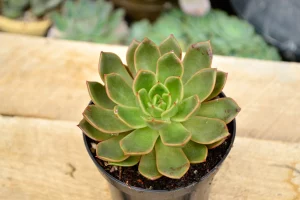
A native of Mexico, the Echeveria agavoides is a beautiful succulent that grows in the shape of a rosette. The leaves are green with red tips and can reach up to eight inches in length.
This type of echeveria is drought-tolerant and does best in full sun to partial shade. When mature, the plant produces yellow flowers. They do well in containers as well as planted directly into the ground.
The main difficulty with this variety is that it needs to be re-potted every two years because its roots will eventually become crowded or entangled. However, this is easy to do by trimming off the outer leaves first and then cutting away the central rosette. It’s also important not to overwater, especially during winter months when plants need less water due to cooler temperatures.
After re-potting your echeveria agavoides make sure you leave about an inch between the soil and pot for proper drainage. Place it in a sunny spot outdoors or bring it inside during the winter months if desired.
Echeveria peacockii
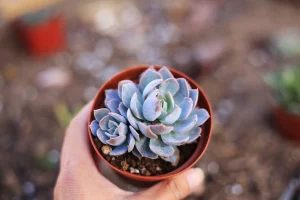
A beautiful plant that’s native to Mexico, Echeveria peacockii is characterized by its blue-green leaves. The leaves are shaped like a rosette and can grow up to eight inches in diameter. This type of echeveria is drought-tolerant and does best in full sun. If you’re looking for a colorful addition to your succulent collection, consider adding an Echeveria peacockii to your collection!
They do well as patio plants or landscape plants but need soil that drains well and plenty of direct sunlight. Keep the soil moist at all times, but don’t overwater this type of echeveria because it needs lots of air circulation to prevent rot from occurring on the roots. Pinch off any brown tips on the leaves if they appear, which signals too much water.
Avoid using over-fertilizers because it could cause rot on the roots. It grows about 8 in diameter with narrow leaves, making it look somewhat like a rosette. It thrives when planted outdoors or in pots where there is good drainage and sun exposure. Its also important not to overwater it as this will kill them.
Echeveria ‘Lola’
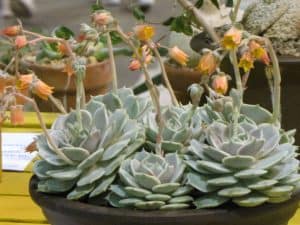
A beautiful type of echeveria, ‘Lola’ has long, pointed leaves that are green with red tips. The leaves are arranged in a rosette shape and can grow up to eight inches long. ‘Lola’ is a slow-growing plant, so be patient when waiting for it to reach its full size. This type of echeveria is native to Mexico and can tolerate high temperatures and full sun.
It can also take plenty of abuse because it can go a while without water. However, if you neglect this type of echeveria too much, the leaves will begin to droop. When you water your plant, don’t overwater it or let the soil get soggy. Watering this type of echeveria regularly will help ensure maximum growth potential and discourage rot or fungus.
Keep an eye out for aphids and whiteflies as well. If they show up on your plant, use neem oil spray every three days until they’re gone. Aphids tend to attack the new shoots of plants and whiteflies love sucking the sap from leaves.
Echeveria ‘Vera Higgins’
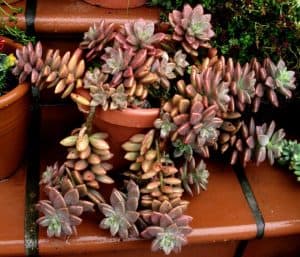
Another type of echeveria that’s worth mentioning is the ‘Vera Higgins’ variety. Vera Higgins features red leaf tips and margins that make it stand out. What’s more, unlike other types of echeveria, this one produces offsets which means you’ll be able to propagate new plants through stem cuttings.
Like the topsy-turvy variety, Vera Higgins prefers well-drained soil and likes partial shade during hotter days as opposed to full sun exposure. They’re also drought tolerant which means you won’t have to worry about overwatering them.
In addition, this type of echeveria requires little maintenance; all you need to do is remove dead foliage if needed and ensure that there’s sufficient drainage at all times.
Echeveria minima
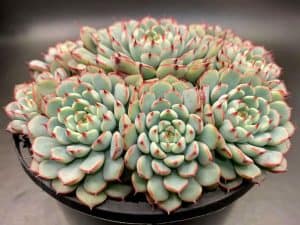
This type of echeveria is native to Mexico and gets its name from the rosettes that it forms that are about one inch in diameter. The leaves are a light green color with a pinkish hue. The flowers are pink and bloom in the springtime. It prefers to be grown indoors because it does not like the sun very much.
It has a reputation for being difficult to grow, but if you take care of it properly, it will flourish. These plants thrive in shade or part shade so long as they have good drainage. If you want your plant to look vibrant, then give it plenty of water but don’t let the soil get too wet or dry out completely.
You should also fertilize it monthly during the summer months and every other month during the winter months. When the plant needs to be repotted, make sure that you use potting mix specifically made for cacti and succulents.
Echeveria harmsii (Red Echeveria)
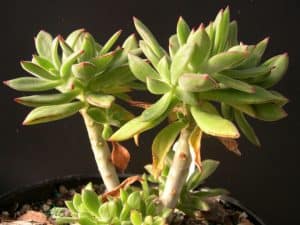
A beautiful red echeveria that’s perfect for adding a splash of color to your succulent collection. This variety is native to Mexico and can grow up to 12 inches tall. It can take an average temperature range of 55-60 degrees Fahrenheit. When grown in full sun, this plant will bloom pink flowers during the springtime months.
As you might expect from the name, it has a hardy nature that withstands both frost and drought conditions. There are two main varieties: rosette form (which has flat leaves) or cylindrical form (which has pointed leaves).
Both types thrive with little water, but they do need more light than most other succulents. If overwatered, it will turn brown and die off quickly.
The cylindrical type is best suited for dish gardens because its leaves get taller than the rosette form when they mature. It also needs more water than the rosette form. The downside to this variety is that it doesn’t handle cold temperatures well, so be sure to bring it indoors if there’s any chance of freezing weather.
They’re one of the easiest plants to propagate – just cut off one or two leaves and place them on top of potting soil. Keep watered until roots develop. You’ll have a new plant within six weeks!
Echeveria green gilva
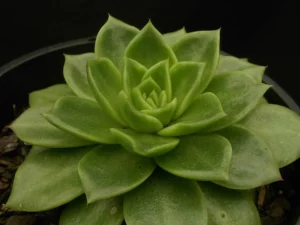
A native of Mexico, this echeveria gets its name from the Spanish word for green. It’s a low-growing succulent that forms rosettes of fleshy, green leaves. The leaves have a powdery coating that helps the plant retain water in hot, dry conditions. Flowers appear in spring and summer, blooming on tall stalks.
